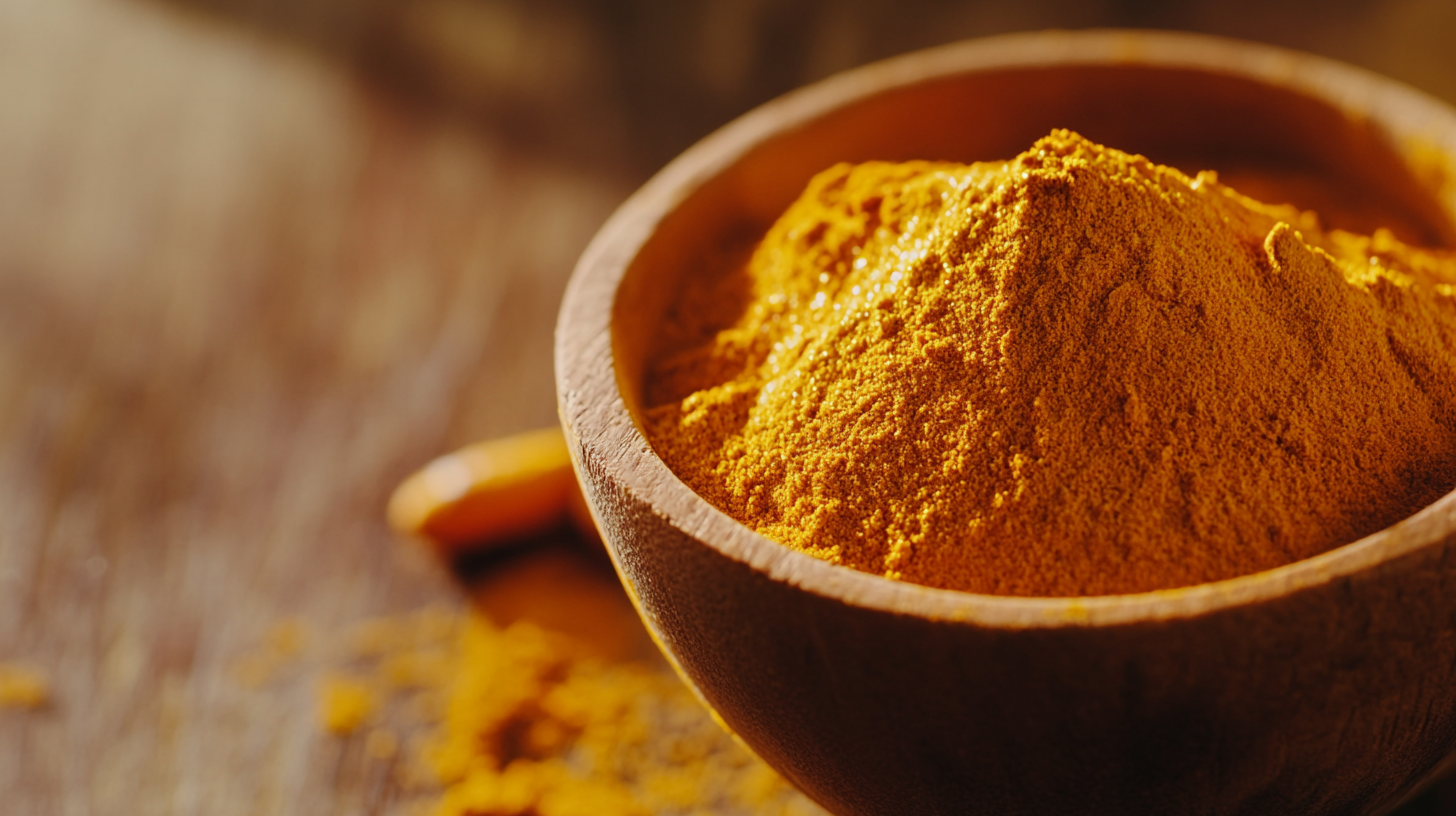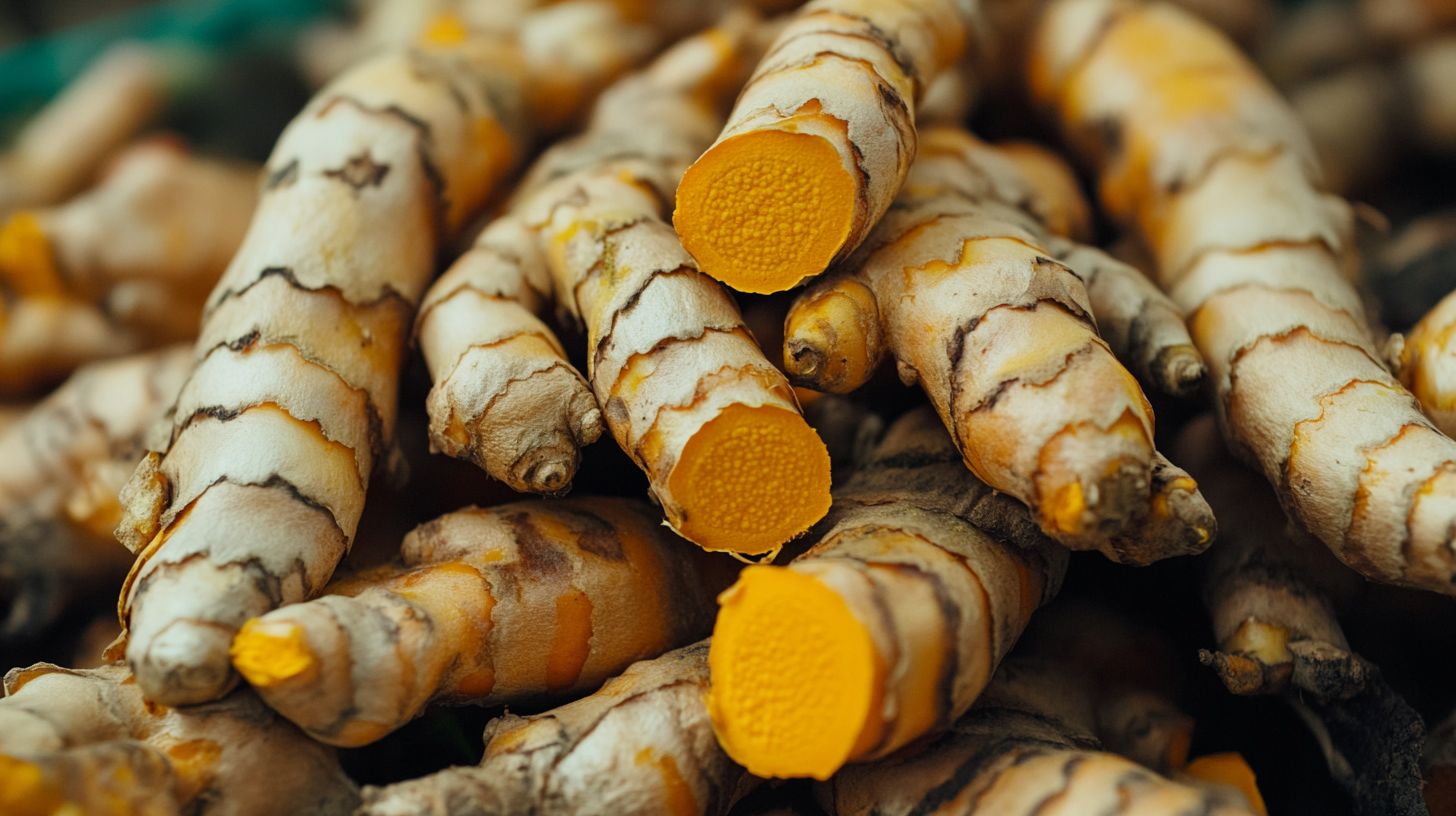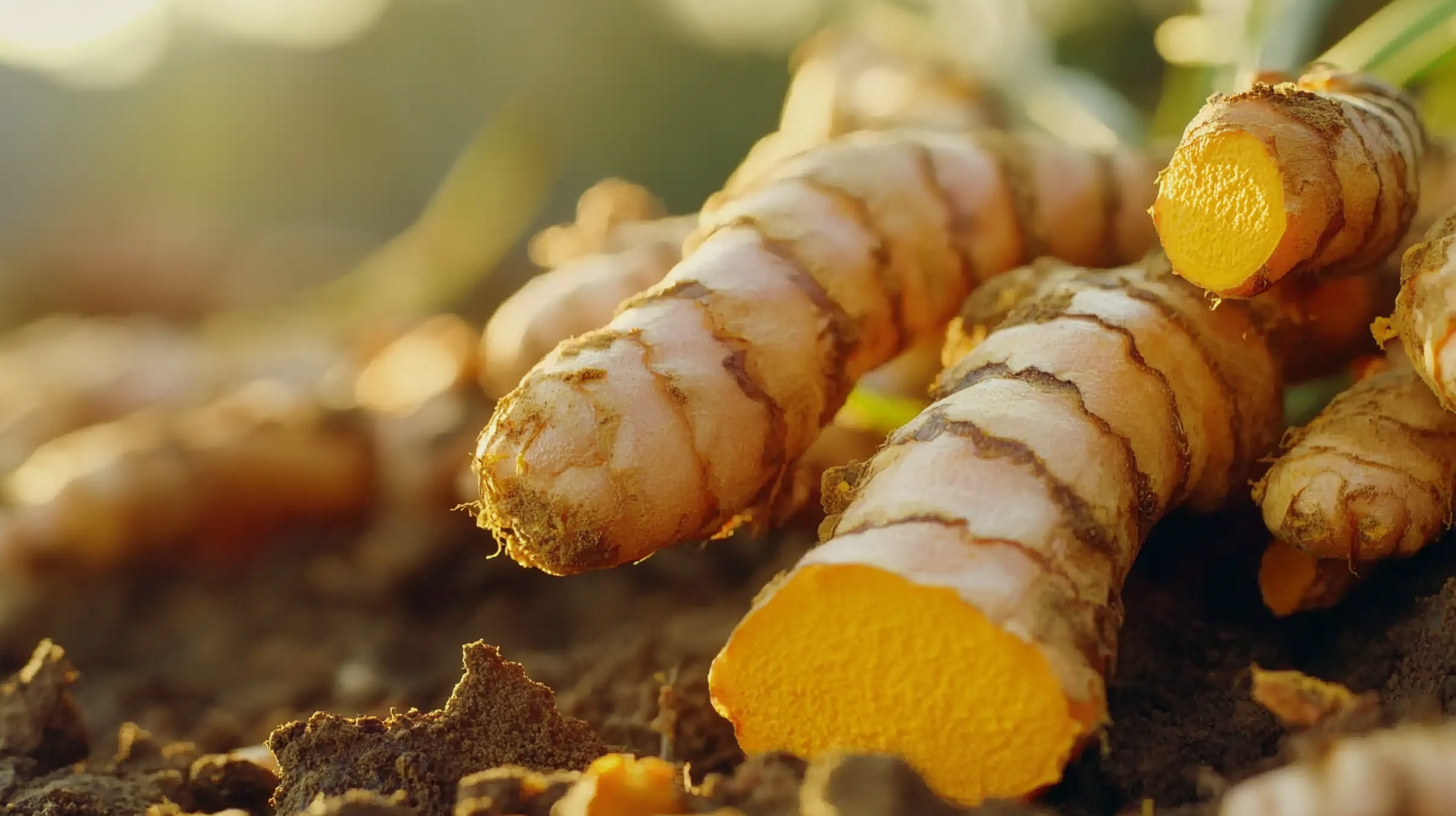50% Response rate
How to Source the Best Turmeric Extract for Your Business Needs
Turmeric extract, renowned for its potent anti-inflammatory and antioxidant properties, has garnered considerable attention in the health and wellness industry. According to a market report by Grand View Research, the global turmeric extract market is expected to reach USD 150 million by 2025, growing at a CAGR of 6.6% from 2018 to 2025. This surge is driven by increasing consumer awareness regarding the health benefits of turmeric and its widespread applications in supplements and functional foods. Furthermore, a study published in the Journal of Medicinal Food highlights that curcumin, the active compound in turmeric extract, demonstrates significant therapeutic effects, making it a sought-after ingredient among consumers and businesses alike. As the demand for high-quality turmeric extract continues to rise, understanding how to source the best products is crucial for businesses aiming to leverage this versatile ingredient effectively.

Understanding the Different Types of Turmeric Extract Available for Sourcing
When sourcing turmeric extract for your business, understanding the different types available is crucial for maximizing both efficacy and cost-effectiveness. Turmeric primarily offers two types of extracts: curcumin extracts, which are derived from the rhizome, and whole turmeric extracts, which contain a broader spectrum of compounds. A report by Grand View Research indicates that the global curcumin market is projected to reach $113.6 million by 2025, reflecting a growing trend towards curcumin’s utilization in supplements and functional foods due to its anti-inflammatory properties.
Additionally, it's important to consider the extraction process. Standardized extracts typically contain a higher percentage of curcumin, often around 95%, making them a powerful choice for therapeutic applications. In contrast, raw turmeric extract may contain lower concentrations but offers a wider array of beneficial compounds, such as turmerone and zingiberene. According to a study published in the Journal of Dietary Supplements, the bioavailability of curcumin can be significantly enhanced with certain additives, underscoring the importance of sourcing extracts that offer not just potency, but also optimal absorption for end consumers. Understanding these distinctions can help businesses tailor their product offerings to meet specific market demands.

Evaluating Quality: Key Factors to Consider When Selecting Turmeric Extract
When sourcing turmeric extract for your business, quality should be your top priority. One of the key factors to consider is the curcumin content, as this active compound not only provides the vibrant yellow color but also the health benefits associated with turmeric. A high-quality extract should contain at least 95% curcuminoids. Look for suppliers that provide third-party testing results to ensure that the product meets these standards.
Another important aspect to evaluate is the extraction method used to obtain the turmeric extract. Methods such as CO2 extraction or alcohol extraction are known to yield purer and more potent extracts compared to chemical solvents. It's also essential to consider the source of the turmeric. Opt for suppliers who source their turmeric from reputable farms that practice sustainable agriculture and minimize the use of pesticides. This not only assures you of the extract's quality but also aligns with growing consumer demand for ethically sourced products.
How to Source the Best Turmeric Extract for Your Business Needs
| Factor | Description | Importance Level | Recommended Standards |
|---|---|---|---|
| Curcumin Content | The percentage of active curcumin compound in turmeric extract. | High | Minimum 95% curcumin concentration. |
| Source | Geographical origin of the turmeric plant. | Medium | Preferably sourced from India, Indonesia, or other reputed regions. |
| Extraction Method | Techniques used to extract curcumin from turmeric. | High | CO2 extraction method recommended for purity. |
| Purity Testing | Tests conducted to verify the absence of contaminants. | High | Third-party lab testing for heavy metals and pesticides. |
| Certification | Certifications confirming quality and standards compliance. | Medium | GMP, ISO, or organic certifications preferred. |
Identifying Reliable Suppliers for Turmeric Extract in the Market
When it comes to sourcing turmeric extract, finding reliable suppliers is crucial for maintaining quality and consistency in your products. Start by researching potential suppliers online, looking for companies with a solid reputation in the industry. Check their certifications, such as ISO or GMP, which indicate adherence to high manufacturing standards. Additionally, reading reviews and testimonials from other businesses can provide insight into the supplier's reliability and product quality.
Once you have a shortlist of potential suppliers, it's essential to conduct direct communication. Request samples of their turmeric extract to assess quality and purity firsthand. Engaging in conversations about their sourcing methods can also reveal their commitment to sustainability and ethical practices. A supplier that is transparent about their processes, from cultivation to extraction, is often more trustworthy and can cater better to your business needs. Don't hesitate to ask for documentation proving the potency and bioavailability of their products, as this information will help you make an informed decision.
Turmeric Extract Supplier Comparison
This bar chart illustrates the comparison of various turmeric extract suppliers based on key metrics such as quality rating, pricing, and delivery time. The data helps in identifying reliable suppliers for your business needs.
Assessing the Cost vs. Quality Trade-offs in Turmeric Extract Sourcing
When sourcing turmeric extract for business needs, understanding the cost versus quality trade-offs is crucial. According to a recent report by Future Market Insights, the global turmeric extract market is projected to reach USD 1.5 billion by 2027, growing at a CAGR of 7.9%. This growth highlights the increasing demand for high-quality turmeric extracts, often associated with premium pricing. Businesses must carefully evaluate their budget constraints against the quality requirements to ensure that they are sourcing extracts that meet both performance and consumer expectations.
Quality turmeric extract is characterized by high curcumin content, which is the primary bioactive compound responsible for its health benefits. Studies indicate that extracts with a curcumin concentration of 95% or higher significantly enhance its efficacy, making them more desirable for supplementation and food production. However, these high-grade extracts typically cost 30-50% more than those with lower curcumin levels. For manufacturers aiming for superior product offerings, investing in high-quality turmeric extract can lead to enhanced marketability and customer satisfaction in a competitive landscape.
To navigate this cost-quality dilemma, businesses should conduct thorough supplier assessments and consider factors such as sourcing practices, extraction methods, and batch testing for purity. The emphasis on organic and sustainably sourced ingredients is also becoming a pivotal factor for consumers; hence, balancing these aspects with cost is essential for long-term success in the turmeric extract market.

Certifications and Testing: Ensuring Purity and Potency in Your Turmeric Extract
When sourcing turmeric extract for business needs, ensuring its purity and potency is critical. Certifications play a pivotal role in this process, helping to verify that the products meet specific industry standards. According to a report by the American Herbal Products Association (AHPA), over 20% of herbal products in the market do not meet labeling requirements, emphasizing the importance of sourcing from reputable suppliers that provide transparency through certifications. Look for products that have undergone testing from recognized third-party organizations, such as NSF International or the United States Pharmacopeia (USP), which can provide additional assurance of the extract's quality.
In addition to certifications, it is essential to understand the extraction methods used to produce turmeric extracts. Studies have shown that solvent extraction can significantly impact the concentration of active compounds, namely curcumin, which is responsible for turmeric's health benefits. A study published in the Journal of Agricultural and Food Chemistry highlighted that extracts with higher curcumin content can be achieved through advanced methods such as supercritical CO2 extraction. This method not only maximizes potency but also minimizes residual solvents, aligning with consumer demand for clean, pure products. Therefore, rigorous testing and certification practices not only enhance the credibility of turmeric products but also ensure that businesses meet customer expectations for quality and effectiveness.